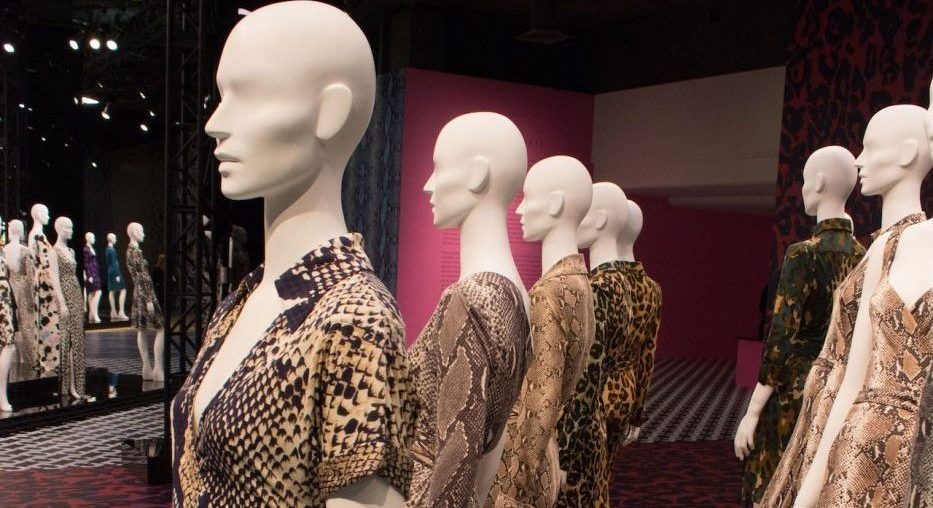How politics of the ’70s informed fashions of the time
It is easy to presume we know the distinctive influences of the 1970s: the bell-bottoms, flared shirts, and jumpsuits, sported by pop artists. It’s essentially a flipbook of ABBA and Sonny and Cher fashions. However, ‘70s styles also mirrored great cultural paradoxes. Radical social movements, an increase in androgynous dressing, military activity, and a focus on individualism can all be seen as direct interactions between fashion and the political sphere.
Politics was suddenly so closely mirrored in 1970s fashion due to fashion’s accessibility to a larger proportion of socioeconomic groups. The revival of boutique stores and diffusion lines has made ready-to-wear clothing more affordable. New synthetic fabrics made more clothes available to more social groups. This accessibility is evident in many designers, but Diane von Furstenberg’s wrap dress stands out. The 1974 silk jersey wrap dress gave women of all sizes and economic backgrounds a simple, timeless silhouette that is still considered a favorite in the 21st century. By 1976, the dress had been sold over five million times. Introducing simple and adaptable statement pieces like this meant that individualism could be augmented and clothing could be affordably altered, manipulated, and, in some cases, weaponized as a representation of political beliefs.
Women rejected white beauty standards and embraced their natural hair and heritages to promote black beauty
Several movements also embraced military styles. The Vietnam War took place from 1955–75 and interacted hugely
with fashion throughout this period. The punk movement used military influence to emphasise their anti-establishment stance,
while hippies wore more feminine, flowy clothes to symbolise peace. Jane Fonda’s infamous political stunt in North Vietnam posing in military gear with Vietnamese soldiers sparked anti-war sentiment and personal backlash against her in the US, highlighting the era’s deep fears of communist takeover.
The ‘70s was a transformative era for the crossover of male and female styles
Military clothing also influenced the Black Panther Party, which used it to express black power. Subversive militant iconography was created with a black leather jacket, trousers, dark sunglasses, and beret. This movement allowed women, especially, to have a sense of fashion liberation. Women made up almost 2/3 of the Black Panther Party in the 1970s. They rejected white beauty standards and embraced their natural hair and heritage to promote black beauty.
The ‘70s was a transformative era for the crossover of male and female styles (androgynous dressing). Androgynous dressing had been embraced throughout the 20th century in many iterations. However, it became particularly prominent in the ‘70s, allowing for a whole new lexis and mindset towards fashion. It became more socially acceptable after Gender Scientist Bem introduced the concept of psychological androgyny. She created the Bem Sex-Inventory Index (BSRI) to identify masculine and feminine traits. This established that a person could have both masculine and feminine qualities, influencing ‘70s fashion. More importantly, it showed that having that mix of qualities could be good!
Androgyny interacted greatly with ‘70s feminism. The second-wave feminist movement produced icons like Gloria Steinem, known for her long, sleek-lined style, embracing more traditionally masculine clothing like jeans and workwear. The movement took much inspiration from the styles of the suffragettes and the reclaiming of practical women’s wear.
When prejudices and stereotypes shaped gender roles, such that only men could wear trousers, it was unthinkable for a woman to wear trousers. The ‘70s eliminated this internalised idea. This is due to ‘60s styles’ lasting impact. With tie-dye and mini skirts coming to the fore, the ‘70s showed a continuation of the late 1960s hippie style. The mini skirt, particularly, was a
marker stone for pushing the boundaries of traditionally accepted fashions for women. Mary Quant introduced the mini skirt to the general public in 1963, and the Victoria and Albert Museum honored her from 2019 to 2020 for the skirts’ revolutionary influence on women’s social liberation. Designers throughout the ’70s reimagined it and promoted women’s social mobility, not just for practicality but also for enjoyment and self-expression. Perhaps in as significant a way as the suffragettes who first sported trousers.

Comments